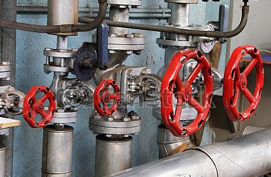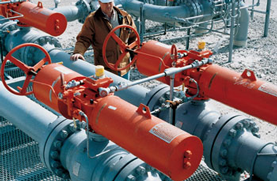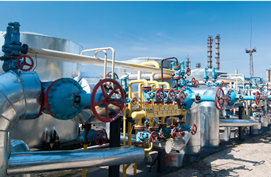
Having spent quite many years in the valves industry, I have observed that, there has been a large displeasure among plant personnel every time a check valve was recommended. In nutshell a check valve allows for the flow in one direction and automatically prevents backflow when the flow reverses direction. It is a self regulated valve unlike other valves that do not need the valve to be open or close.One of the common wrong practices I have observed are, check valves are selected the same way on/off valves are selected based on line size and opting for largest Cv available. What is not understood here is unlike on/off valves, check valves function largely on the internal flow conditions as the disc is always subject to flow pressure and responding accordingly. In most cases Cv is calculated considering 100% open valve position however a reduced flow pressure in the line results in wear and tear of moving parts as well as an increase in pressure drop which is not desired resulting in the valve being a failure. Well i decided to write this article to clear some misconceptions and narrow down the criteria for selecting the right valve for your application. First of all you should know the service conditions.
Here are some basic guidelines for valve selection:
A. Where the valve is to be used, what function you want to perform?
1. Starting and Stopping flow: Gate, Ball and Butterfly Valves are the most common form of shut-off valves, with ball and even butterfly valves rapidly becoming the primary choice due to the ease of automation and fast shut-off abilities, and in the case of ball valves the barest minimum of flow restrictions. We are often supplying ball and butterfly valves fully actuated, as plants of today become more and more automated, and are often now run by computers and the flick of a switch.
2. Regulating Flow: Regulating or throttling flow is most commonly done with the use of a globe valve, and to a much lesser extent an angle valve. The seat design forces the flow evenly around a disc or plug arrangement that enables a closer regulation of flow. Globe valves are often used for the control of steam. Your garden tap is a very common and basic form of a globe valve design.
3. Preventing Back Flow: This is the function of a check valve, it prevents flow reversal in piping, a primary cause of water hammer. Check valves most commonly are swing checks, normally used with gates and ball valves, and lift check or spring checks, which are normally used with Globe and Control type valves.
4. Regulating Pressure: Pressure Regulators and Control Valves are used to reduce incoming pressure and maintain it at a required service pressure. Fluctuations to the inlet pressures of a pressure regulator will not affect the outlet pressure for which it is set at.
5. Relieving pressure: These are known as Safety Valves, normally used
for steam, air, and gases, and Relief Valves, usually used for liquids. These
are normally spring loaded valves which open automatically when the pressure
exceeds a set limit. They can either vent to atmosphere or to other piping.
Excessive pressures in something like a Boiler could cause major damage, if a
relief valve was not used.
B. What is the service medium ? What are the pressure/temperature requirements?
In addition to the maker’s brand and valve size, pressure and temperature ratings are equally important and normally expressed in pounds and are in terms of steam, unless otherwise indicated. While looking at temperature and pressure requirements don’t forget to consider just the optimum running conditions, but what the pressure and temperature would be on start-up /shut-down, or if a pump trips etc. Steel ratings bear a mark such as 150, 300, 600, 900 etc. The figures denote a maximum pressure (in pounds) at a certain maximum temperature, for which the valve is suited. And will also reflect on any ANSI flanges required for the end connections. The important effect temperature has on pressure ratings means it is imperative that data sheets are referred to at all times. Further based on the above it is important to evaluate the service medium (air, steam, water, corossive chemicals). What changes in quality might be expected, will there be any impurities, will the fluids come from a consistent source or different suppliers (with inherent changes in quality), will there be a filter to remove suspended particles , etc. Also it is important to know the condtions of operation (moderate/extreme). From all of the above material of construction of the valve and its internals can also be determined as below.
Brass and Bronze: Brass is the stock standard material used in most small bore, standard cold water applications. Bronze an alloy of copper, tin, lead and zinc, is normally used for steam and higher temperatures up to 230°C.
Cast Iron: Normally used for lower pressure applications and in butterfly valves bodies where it provides a cost effective alternative to steel. Common in the fire protection and water industry.
Carbon and Stainless Steel: Steel is recommended for higher pressure and temperature applications and/or in services conditions that may be too harsh for Brass, bronze and Cast iron.
Alloys: Used in severe corrosive or acidic applications, or for use at extreme temperatures. Many different types of alloys are available, but these are normally manufactured and imported as required, as some of the more exotic materials can be quite expensive to have sitting around a shelf gathering dust.
PVCs: Plastics and PVCs are becoming an alternative to brass for use in low pressure/temperature air, water and even chemical applications.
C. What kind of operator will you need manual/motorized ?
While you go about selecting the right valve, choosing the right kind of operator is also important. Choosing between manual or motorized actuator (Pneumatic/electric/hydraulic) depends on a few factors. While majority of the applications prefer pneumatic actuators due to their light weight and rugged structure. Moreover they are cost effective and highly reliable. Pneumatic actuators are used in a potentially explosive environment. The failsafe action of pneumatic actuators is system inherent. Manual shutoff valves are used to isolate or bypass control valves. They are only occasionally operated and used for on/off applications, when the response time is not critical. Electric actuators are mainly used in applications where compressed air is not available viz; in small systems for building automation, or in some areas of power plants. However, the implementation of failsafe action (fail open or fail close) upon power supply failure or emergency shutdown in large electric actuators requires a technically complex construction. Finally hydraulic actuators are used in applications where the required force to operate the valve cannot be accommodated by pneumatic or electric actuators.

 Hot new
Hot new Hot new
Hot new Hot new
Hot new